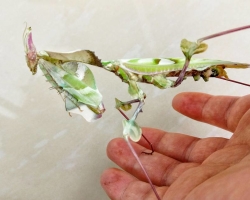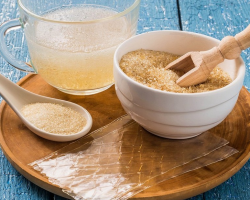Surely many gardeners or even those who just pass by fruit trees, there was such a picture: a significant radial crack in the bark, which has a slight angle of inclination. A similar phenomenon on a sunny frosty day is especially clearly noticeable.
Content
The frost is also called a frosty crack. What to do with these cracks, how to try to avoid them, how to cure a tree undergoing frosts - read in our article.
What is a frost?
- Morozoboin is fiber. Quite often, this phenomenon can be observed on the surface of the entire barrel. As a rule, even overgrowing in the spring, with frost, cracks occur again. Such a repeated repetition of the process can lead to the formation in the place of the frost -ante of the crests, which become a severine of rot.
- Frosobines can be located not only on the surface of the barrel, leading to the destruction of the cortex, but also to penetrate the very core of the tree. In addition, the bark can freeze and die, falling off pieces. Cracks appear quickly enough, and at the same time you can hear a characteristic crack.
- Fruit trees are most susceptible to frost -based: pears and apple trees, plums, cherries and cherries.

For what reasons do frosts arise?
- There are 2 main versions about what is the cause of frosty cracks. The first indicates that as a result of seasonal cooling The deformation that occurs in wood is in two directions: tangential (i.e., walking along the tangent relative to the one -year layer of the trunk) and radial, passing directly through its core. Between these areas of deformation, critical stress develops, which can lead to a rupture of wood tissues. In this case, the water factor is also added, which, accumulating in the center of the barrel, expands when freezing.
- There is another opinion regarding the causes of frost -ante. It consists of a significant temperature difference, which is observed in the inner parts of the wood trunk: central and peripheral. During winter frosts, under the influence of low temperatures, the compression of the outer layer is more intense than internal, which leads to a frosty crack under pressure. This version has fewer adherents than the first, but, nevertheless, it is also taken into account.
- Also, the generally accepted reason is temperature drops in winter, when the frost intensifies at night, and in the daytime the air temperature can reach plus values. Under the influence of such a sharp difference, there is a deformation of the trunk heated during the day, leading to the rupture of the tissues of the bark, the formation of hollows and cracks.
- This is also confirmed by the fact that frost -bears are much more often on the side of a tree facing the south and therefore more warming up during the day, and at night undergoing solidification. This is most clearly expressed in January-February, when the most sharp temperature changes are observed, and the tree at this time already begins to give strength to preparation for the spring period.
What are the dangerous frosts?
- Having arisen, a fruit tree can develop in 2 directions. Frosty crack will most likely overgrow due to active development cambial layer, which thickens the fabrics and promotes delaying the wound. But, unfortunately, this delaying crack is almost useless for wood, since in winter the overgrown layer of wood will burst again with almost one hundred percent probability, since its density is insignificant, the bark itself is much thinner.
- This can be repeated from year to year, which will lead to education frost -bearing ridge On the barrel, which is a certain size, the elevation.
- And here the following outcomes of the further development of frostoboins are possible. With a favorable combination of external factors, under almost ideal climatic and agronomic conditions, this frost -bearing ridge will contribute to the weakening of the tension during frost, and then the crack will no longer occur. Moreover, over the years, the surface of the frost -bearing ridge is leveled and will practically become invisible and indistinguishable from the rest of the bark.
- But this is ideal. In fact, most often in crack over the years a fungus is developed, brought by a fungal dispute or insect. And then in the crack, even with the growth of the frost -bearing ridge, the process of decay begins, penetrating over time deeper into wood. Having reached the core, the infection begins to spread through all parts and tissues of the tree, including not only the bark, the leaves of leaves, the roots, but also the young shoots. By the way, it is young seedlings that are most susceptible to frostobines, since their bark is the thinnest.
If the tree is not treated, it dies.
How to treat fruit trees to treat fruit trees?
- Immediately get ready for the fact that it is impossible to quickly cope with the frost, it will take several years for this. The most popular way to combat frost -beams is cutting the edges of the cracks with subsequent covers with ordinary garden varWhich, regardless of what is included in its composition, is a water -repellent mixture.
- In order for the garden var to give the most effective film, it is necessary that the sections are even and smooth, the bark should not be lifted up. It is this film that will make the risk of water from the cut of the cut, and pathogenic organisms into wood, thereby minimizing the threat of decay.
- It is better to wrap fresh frosts wide strips of fabricwho will resist the exfoliation of the bark. But the smearing by garden variety is better to postpone until early spring. Without waiting for the beginning of sapotage, and even more so - swelling of the kidneys, you should process the damaged area.
- From it a disinfected knife (brush, scraper), you need to remove the dead bark so that light healthy wood is visible. For a greater effect, the site of the sections is best disinfected with 5%solution of copper sulfate or 1%solution of burgundy fluid. And after that, a layer of garden vara is applied.

- The final stage - Tagging the trunk of a burlap, which dries quickly enough and therefore will not contribute to baking wood. The burlap is fixed with wire. Such a sequence of actions should be repeated during each processing of a frost -sided crack.
- You can also try to cure the frost using the method vaccinations with a bridge. It is used if the nature of the damage is quite serious, and then the above method is not applicable. This method is used for frost -bearing apple trees. It is not complicated, but it is necessary to carefully prepare for it.
- The bridge is vaccinated as follows: the stalk (as a rule, the one -year escape of last year) of the same variety of apple trees must be inserted in areas located above and below the frosty crack. This “insert” is tightly tied, forming a kind of bridge that will serve so that moisture and nutrients can move.
- Such vaccination is done in the middle of May, When the bark warms up and dries and will freely separate from wood. If you previously applied clay on the frost, then the place where the vaccine will be made must be carefully cleaned with a wet rag, and then cut the bark. The incision from below should be performed by the letter “T”, and on top - the letter should be turned upside down. It is necessary to lift the bark of the tree on both sides a little and insert the escape into this space. Then - as in the previous case, the site where the vaccine is made is tied and coated with garden var. As a rule, fusion takes about 2-3 weeks. During this time, the cuttings of the cuttings occur, therefore, so that it does not crash into the bark of the tree, the strapping must be a little weakened.
- Such a vaccine can be carried out both on a young tree, no more than 4 cm in the diameter of the barrel, and on thicker ones. In the first case, one vaccination is made, in the second - several, from two to four. It is necessary to vaccinate on different sides of the barrel. In the event that the vaccinated escape gives the kidneys from which new shoots are formed, they need to be removed.
- Large deep frosts, whose length exceeds 15 cm, tighten with a thick wire, under which wooden struts are laid. This operation needs to be carried out for several years in a row in the spring, before the formation of a well -dragged scar.
- Another method that gardeners sometimes use in order to heal the bark faster is compress. It is made from young sorrel, interpreted to the state of mashed potatoes, superimposed on the bark and tied tightly. During the summer, the sorrel compress changes several times.
- You can also furrow the bark. A sharp garden knife, pre-processed, in which there is an antiseptic, make 3-4 grooves, leading them from top to bottom, capturing the entire circle of the stem. Carry out intermittent stripes, approximately 35-40 cm. Such an operation should also be done in May.
What to do so that there are no frostobines?
As you know, the disease is easier to prevent than to treat, therefore, preventive measures are necessary to prevent the appearance of frosty cracks.
They come down to the following:
- Most often, applying a protective layer to the barrel, which is also located on skeletal branches. How to smear frosts? The mixture usually consists of a solution of bended lime, but white paint can also be used. It is not difficult to make it yourself, dissolving 3 kg of lime in a 10-liter bucket of water. So that the paint is more stable and does not wash off as a result of the effects of snow or rain, add a little glue (you can take wallpaper or casein). It is also permissible to cover water -based paint. It is best to whitewash in early autumn, and in the southern regions - in November.
- Morozoboin can be avoided if you wrap the thin trunk of a young tree insulation, which uses burlap, reeds, conifers, straw, straw or cardboard. In extreme cases, you can wrap the tree simply with newspapers. But polyethylene wood will only harm the tree, since it does not “breathe” like natural materials. Such protective material is tied with a conventional rope. It should be noted that it is necessary to wrap not only the tree trunk, but also the lower branches in the places of their joints, which are also prone to frosty cracks.
- The method is also applied frone shade: The south side of the plants is fenced with bent tin or boards, which allows the sun's rays to reflect, thereby avoiding uneven heating of the trunk. Somewhere in the middle of spring, such a fence is removed.
- Initially, you should correctly choose the place where the tree will be planted. This should be a space that is as protected from damp and cold air flows.
- The root neck of the seedling during planting should not fade below than the soil level. Otherwise, the seedling will develop weakly, and minus temperatures will be destructive for him.
- The appropriate fertilizers should be correctly applied. For example, an excess of nitrogen does not make it possible to grow the wood qualitatively, which is an additional factor in the occurrence of frost -ante.
- It is best, planning to plant fruit trees, to dwell on frost -resistant varieties. Such a choice is especially relevant for residents of the northern regions.

How to cook garden var to yourself: advice
Garden Var from frosts can be prepared yourself. To do this, you will need the most common materials that are easy to find.
- Recipe 1. 3 parts of crushed rosin are taken on 6 parts of the melted paraffin and brought to a boil, after which 2 parts of vegetable oil are added. Boil for another half an hour, and after cooling the mass is kneaded until it becomes homogeneous.
- Recipe 2. Two parts of bee wax are brought to a boil, four parts of rosifoli and one are added to it - an interior fat. Boil for 60 minutes and also knead until the mass becomes homogeneous.
- Recipe 3. This Garden Var is named Zhukovsky. In turn, the wax, rosin and unsalted fat are in turn. Then all parts are drained and poured into cold water. The composition in the water will curl, after which it can be used.
- Recipe 4. Another Var - Raevsky. It includes wood resin (0.5 kg), medical alcohol (60 ml) and linseed oil (2 tbsp.).
Useful articles on the site:
- Nitroammofoska fertilizer
- The indoor plant is a croton
- Urea (urea) - what kind of fertilizer
- Why do plants need mineral fertilizers
- The best perennial flowers for your garden







